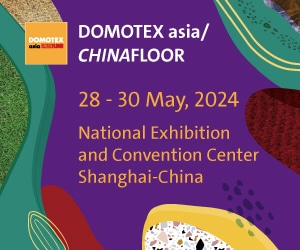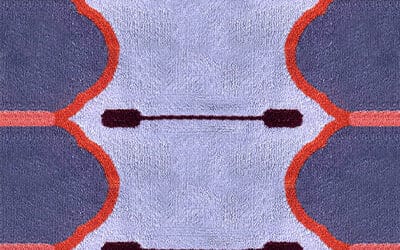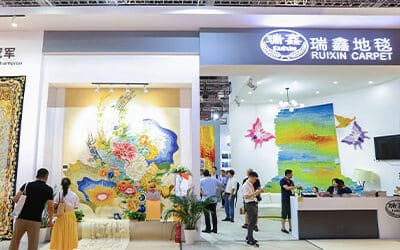Dressing for the weather is increasingly important in response to the global warming crisis, but what about ‘dressing’ our homes? Shouldn’t our interiors be ‘clothed’ year round to create natural passive heating and cooling? This is the compelling argument of ‘The Clothed Home: Tuning in to the Seasonal Imagination’, the Polish Pavilion, created in response to the London Design Biennale’s 2021 theme of ‘resonance’.
The Polish Pavilion is organised for the third time by the Adam Mickiewicz Institute whose mission is ‘to develop and communicate Poland’s cultural dimension through unique values shaped by centuries-old traditions’. One of their core programmes is New Polish Tradition—an initiative to demonstrate how traditional ‘pre-electric’ culture can respond to 21st-century issues such as climate change.
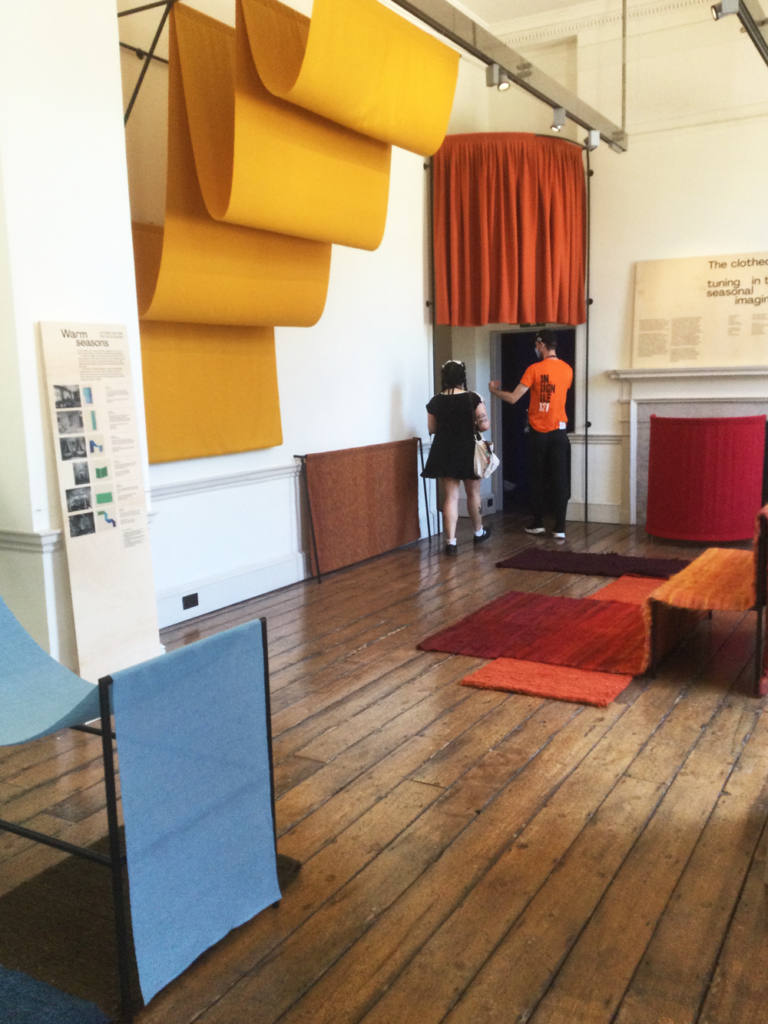
The Clothed Home 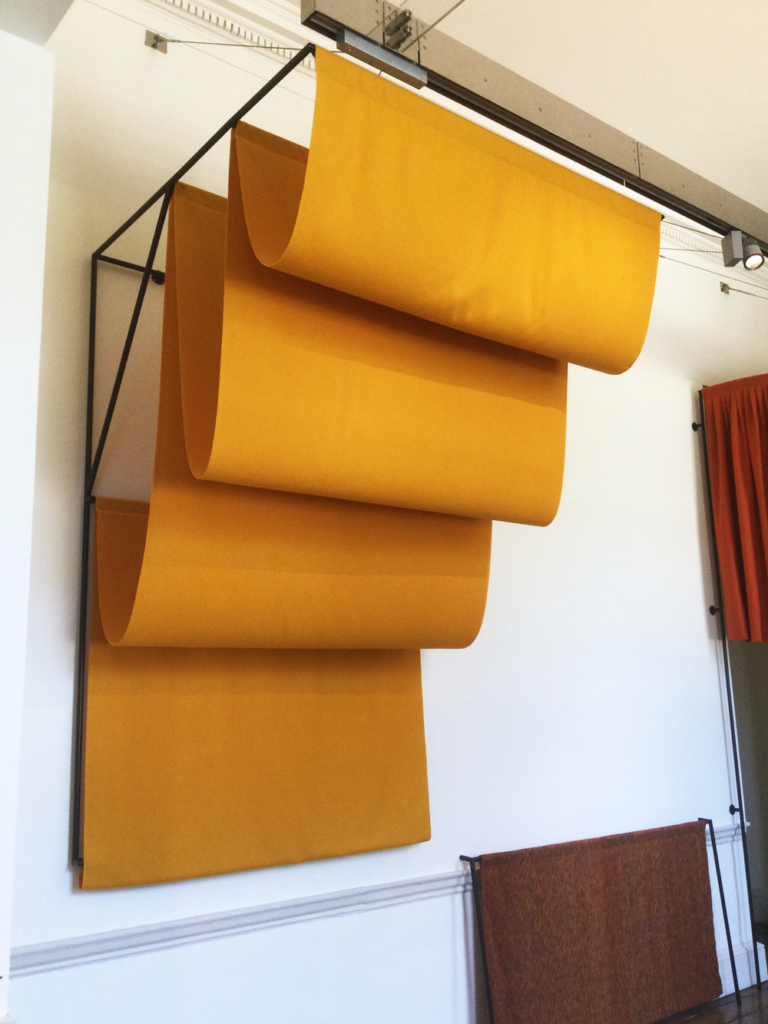
The Clothed Home
Maigorzata Kuciewica, Simone De Iacobis, Aleksandra Kędziorek and artist Alicja Bielawska conceived the concept of ‘The Clothed Home’ which won the Mickiewicz Institute’s Pavilion commission. Their Pavilion concept seeks to demonstrate how the ways our ancestors ‘clothed’ their homes with textiles according to the seasons is a formula that can be adapted to 21st-century homes to allow us to live in ‘rhythm’ with the seasons.
At the Pavilion entrance is a wool and linen kilim that features a colour wheel that represents ‘the twelve Polish seasons’, also known as phenological seasons. Each season from ‘pre spring’ to ‘late winter’ is assigned a colour: cool colours for warmer months and warm colours for cooler months. These colours are reflected in the Pavilion textiles creating an easy-to-follow colour-coding system to understand the heating or cooling properties of each woven object. The concept of four seasons is relatively recent, created in response not only to changes in agriculture, but to the modern era’s demand for year-round ‘comfort’ that evolved into increasingly artificially heated and cooled homes. Although left unstated, it’s likely the Polish concept of 12 seasons evolved from the medieval-era ‘Labours of the Months’ where each month was associated with mainly outdoor activities like the June hay harvest.
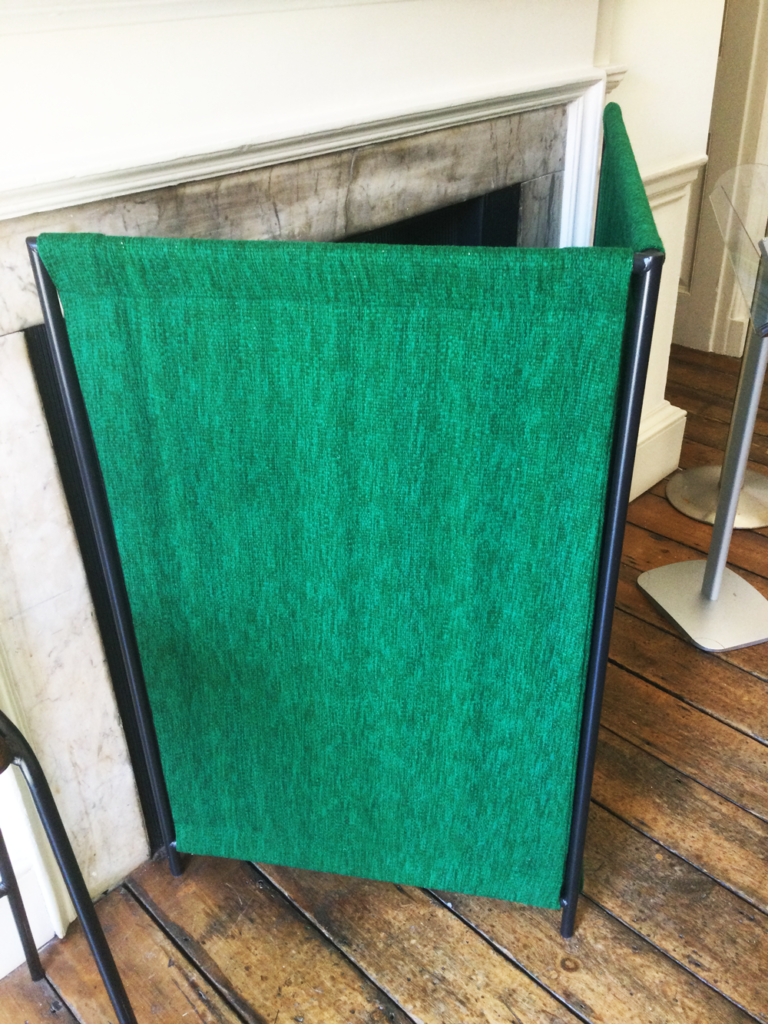
The Clothed Home 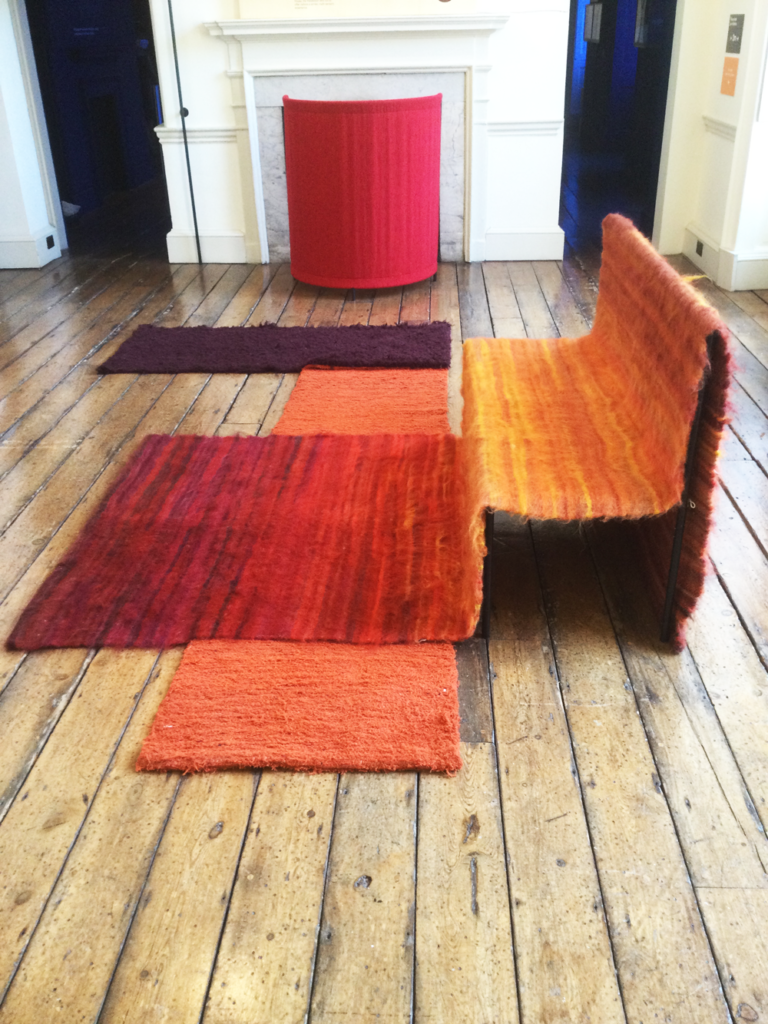
The Clothed Home
The curators propose people learn to embrace a degree of ‘discomfort’ by rejecting the status quo of heating or cooling the entire volume of air in a room and returning instead to natural non-mechanical methods to repel heat in hot months and heat people (not spaces) in cold months. The curators commissioned weavers to make contemporary woven adaptations of traditional Polish textile-based heating and cooling devices for the home. Warm months include a door screen of textile strips (Mucholap) that allows air circulation as it acts as a solar screen. Cool month concepts include insulating door curtains (Portiera), draught screens (Parawan), furniture-to-floor enfolding textiles (Narzuta) and a suspended horizontally draped textile (Podpinka) that creates a false ceiling in response to the basic physics principle that ‘hot air rises’.
The chief virtue of the Pavilion is the way in which it raises awareness of the relatively inexpensive ways textiles can be used in the home to create pockets of heat or deflect heat. The uncomplicated woven designs featured in the Pavilion—simple geometric shapes—should give every visitor confidence that they too can realise the possibilities of using textiles to reduce energy consumption and increase comfort.
The Dress and Decor essay in the Pavilion catalogue states: ‘Can one imagine a future where we rediscover the thermal delights of inglenooks, curtained beds, and breezy screened porches… Maybe.’ COVER believes that ‘maybe’ is already on its way to becoming a firm ‘yes’.
The London Design Biennale is at Somerset House, London until 27 June 2021


